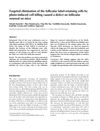31 citations
,
August 2001 in “PubMed” Hair follicles convert androgens, affecting hair loss patterns.
103 citations
,
July 2001 in “Proceedings of the National Academy of Sciences” TGFβ1 expression in skin causes hair loss and skin thickening, but these effects are reversible.
27 citations
,
June 2001 in “International Journal of Dermatology” MMP-9 increase in hair follicles may lead to hair loss.
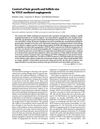 520 citations
,
February 2001 in “Journal of Clinical Investigation”
520 citations
,
February 2001 in “Journal of Clinical Investigation” VEGF helps hair grow and determines follicle size by increasing blood vessel growth.
305 citations
,
December 2000 in “The EMBO Journal” Inhibiting Bmp signaling disrupts hair growth and differentiation.
71 citations
,
February 2000 in “Endocrinology and metabolism/American journal of physiology: endocrinology and metabolism” Estradiol stops hair growth in mice, but an antagonist can reverse this effect.
98 citations
,
November 1999 in “Dermatology Online Journal” IGF-1 can boost hair growth by promoting cell growth and preventing cell death.
 231 citations
,
October 1999 in “Journal of Clinical Investigation”
231 citations
,
October 1999 in “Journal of Clinical Investigation” Activating the Sonic hedgehog gene in mice can start the hair growth phase.
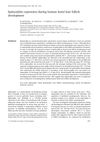 15 citations
,
September 1999 in “British Journal of Dermatology”
15 citations
,
September 1999 in “British Journal of Dermatology” Epimorphin, a protein, plays a key role in the development of hair follicles in human fetuses, but it doesn't help in maintaining the stem cell population of the follicular skin layer.
 22 citations
,
August 1999 in “Experimental Dermatology”
22 citations
,
August 1999 in “Experimental Dermatology” Certain drugs can cause early hair growth in mice by affecting the nerves.
109 citations
,
April 1998 in “Journal of Investigative Dermatology” 71 citations
,
January 1998 in “Pathobiology” The document concludes that certain rats and mice are useful for studying hair loss in humans and testing treatments.
47 citations
,
July 1997 in “British Journal of Dermatology” The inner root sheath is crucial for hair follicle stability during the transition from growth to involution.
23 citations
,
July 1997 in “British Journal of Dermatology” The inner root sheath is vital for hair follicle stability during growth changes.
154 citations
,
October 1996 in “Proceedings of the National Academy of Sciences of the United States of America” Estrogen affects hair growth and skin cell multiplication.
114 citations
,
October 1996 in “Dermatologic clinics” Hair loss is mainly caused by hormones, autoimmune issues, and chemotherapy, and needs more research for treatments.
 90 citations
,
October 1996 in “Dermatologic Clinics”
90 citations
,
October 1996 in “Dermatologic Clinics” Growth factors are crucial for hair development and could help treat hair diseases.
219 citations
,
July 1995 in “PubMed” Keratinocyte growth factor promotes hair growth and reduces hair loss from chemotherapy.
122 citations
,
July 1994 in “Journal of Investigative Dermatology” 30 citations
,
August 1993 in “PubMed” IL-1 alpha stops hair follicle growth and hair production.
44 citations
,
July 1993 in “Journal of Investigative Dermatology” 39 citations
,
July 1993 in “The journal of investigative dermatology/Journal of investigative dermatology” FGF and EGF are crucial for hair follicle development and growth.
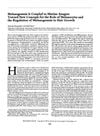 210 citations
,
July 1993 in “The journal of investigative dermatology/Journal of investigative dermatology”
210 citations
,
July 1993 in “The journal of investigative dermatology/Journal of investigative dermatology” Hair color production in mice is closely linked to the hair growth phase and may also influence hair growth itself.
28 citations
,
July 1993 in “The journal of investigative dermatology/Journal of investigative dermatology” 27 citations
,
July 1993 in “The journal of investigative dermatology/Journal of investigative dermatology” 66 citations
,
August 1990 in “Journal of Investigative Dermatology” Epithelial cell growth in rat hair follicles needs contact with mesenchymal cells through the extracellular matrix.
 53 citations
,
May 1990 in “Journal of Dermatology”
53 citations
,
May 1990 in “Journal of Dermatology” Minoxidil speeds up hair growth in rats without prolonging growth phase.
26 citations
,
January 1987 in “Archives of Dermatology” Topical minoxidil does not block androgen effects.
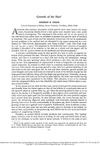 521 citations
,
January 1954 in “Physiological Reviews”
521 citations
,
January 1954 in “Physiological Reviews” Hair growth is cyclic and influenced mainly by local factors.









